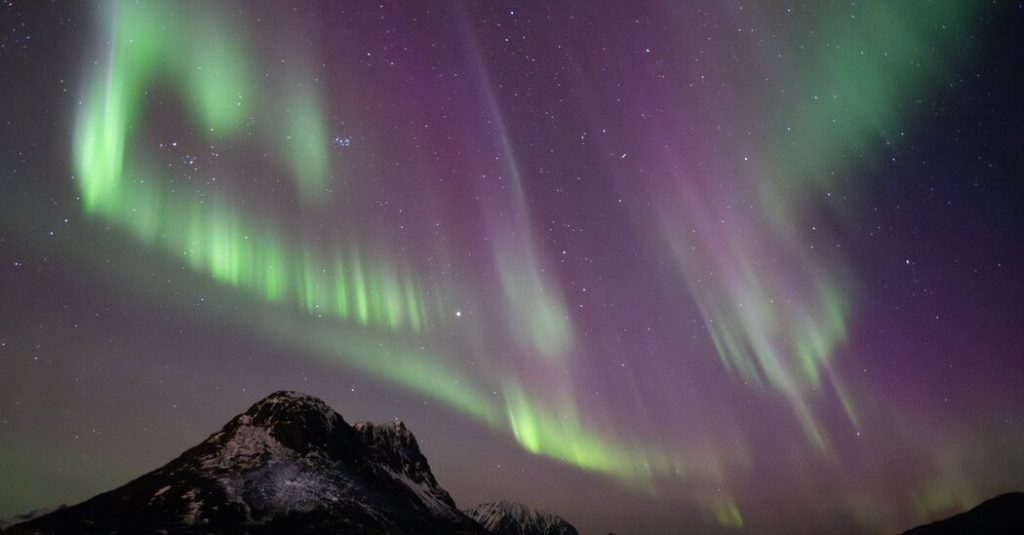A rare and dazzling display of nature is expected to light up the skies starting Friday night, thanks to an unusual amount of solar flare activity. The aurora borealis, or northern lights, could be visible in the sky with an arc of colors that includes green, purple, and red. The visibility of this phenomenon will depend on your location and weather conditions. Places with a lot of bright lights, such as cities, may have difficulty seeing the lights, while areas with clear skies will have a better chance of spotting them. The Northeast is expected to be clouded over on Friday night, while the Midwest may have clear skies after a storm system passes through.
The intensity of solar storm activity could potentially allow the lights to be visible as far south as northern Alabama and Georgia, where the night skies are predicted to be relatively clear. The southern Plains and Rockies, however, may have poor viewing conditions. On the other hand, the West Coast is expected to have relatively cloud-free conditions, which could make for excellent viewing opportunities. Some of the lights may also be visible outside of the United States, in countries like Denmark and parts of Scandinavia. In parts of Britain, there is a good chance the lights will be visible.
With a forecast of clear skies, there is a strong possibility of seeing the aurora across the northern half of the UK. Images of the lights over England began to surface on social media, even from areas like London with high light pollution. A tip for those in clear areas is to snap a picture or record a video with a cellphone, as the sensor on the camera is more sensitive to the wavelengths produced by the aurora and may capture an image that is not visible to the naked eye. The severe solar storm causing this phenomenon has prompted a rare warning from the National Oceanic and Atmospheric Administration’s Space Weather Prediction Center.
As nuclear reactions occur on the sun, it routinely expels material from its surface, which reached Earth in the form of a solar outburst. This solar activity could potentially cause electrical outages and interfere with navigation and communication systems, affecting satellites orbiting close to Earth as well as infrastructure on the ground. Despite the warning, members of the public are advised that they shouldn’t worry as the grid is expected to be stable. The solar emissions can lead to disruptions in navigation systems, radio communications, and even the power grid, but normal daily activities can continue for most people on Earth, according to Rob Steenburgh, a space scientist at NOAA’s Space Weather Prediction Center. The expelled material from the sun is expected to reach Earth’s atmosphere by Friday afternoon or evening.
The extreme solar storm being experienced is rated at a level 5 by the Space Weather Prediction Center, up from a level 4 earlier in the day. The last extreme event of this magnitude occurred in October 2003, resulting in power failures in Sweden and damaged transformers in South Africa. The current storm is caused by a cluster of sunspots on the solar surface that are flaring and ejecting material every six to 12 hours. This is expected to produce one shock after another throughout the weekend, according to Brent Gordon, chief of the space weather services branch at NOAA’s Space Weather Prediction Center.


